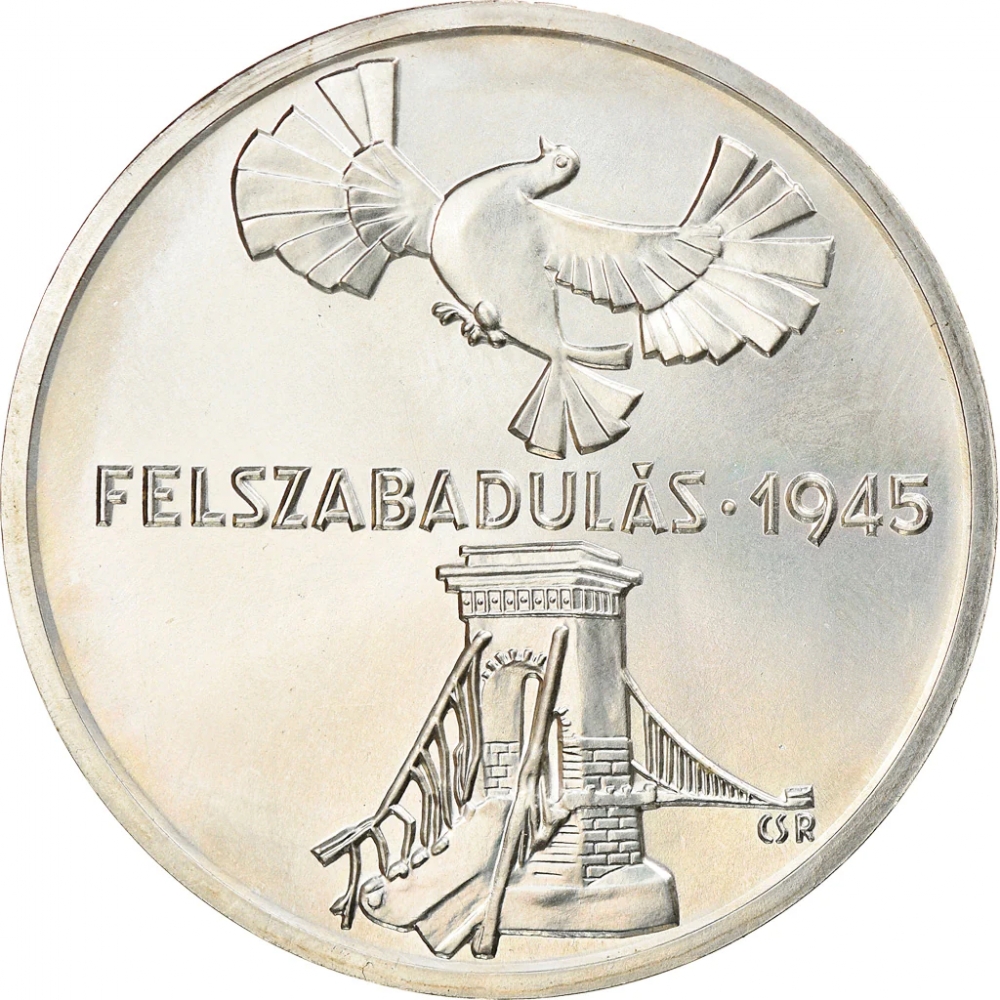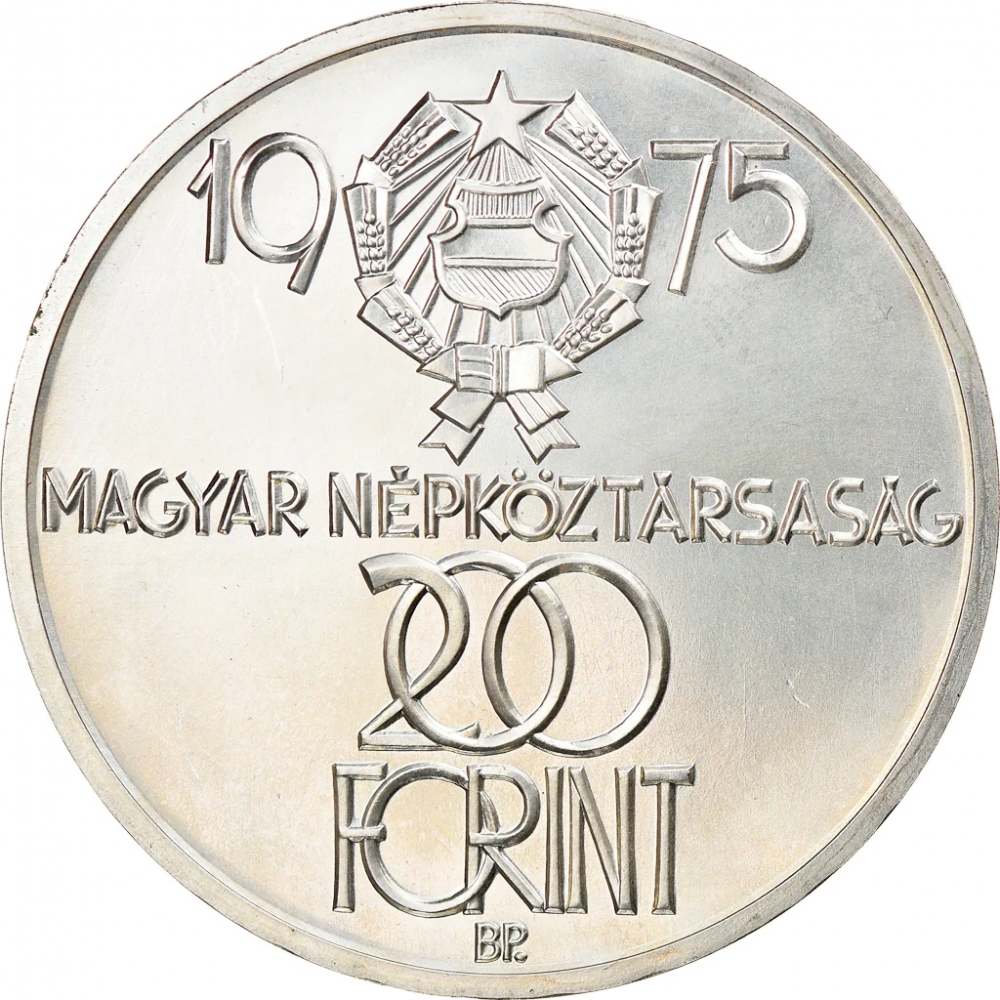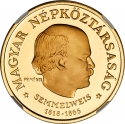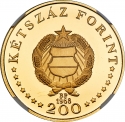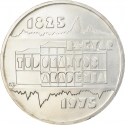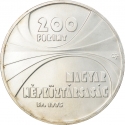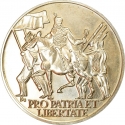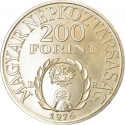You are about to finish your registration. Please check your mailbox (including spam folder). There should be a letter with a confirmation link. Check setting to make sure that your e-mail address is correct.
Send letter againDescription
Liberation Day, celebrated in Hungary on April 4th, commemorated the departure of the last German army units from the country in 1945. Initially declared the main national holiday in the Hungarian People's Republic in 1950, it honored the Soviet forces' role in Hungary's liberation. Ceremonies included wreath laying at Red Army graveyards and military parades, with the holiday removed from official observance in 1989 due to the perceived severity of Soviet-aligned rule. Despite this, private commemorative events persisted, particularly near Soviet memorials like Liberty Square.
Engraver: Róbert Csikszentmihályi
Obverse

|
Depicts a pigeon with spread wings as a symbol of freedom, the pier of the exploded Széchenyi Chain Bridge of Buda-side, and in the middle the inscription: "Liberation 1945". The engraver's initials (CSR) below. FELSZABADULÁS 1945 |
|---|---|
Reverse

|
Depicts the coat of arms of the Hungarian People's Republic, dividing the issue date, the country name (Hungarian People's Republic), denomination and the mintmark (BP) below. 19 75 |
| Edge |
